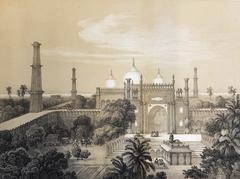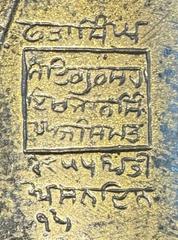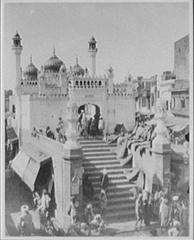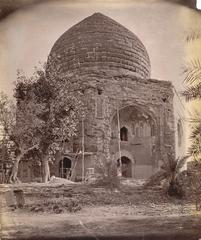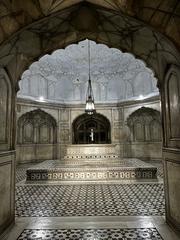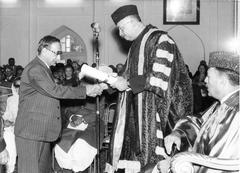
Visiting the Samadhi of Ranjit Singh, Lahore: Hours, Tickets, and In-Depth Guide
Date: 03/07/2025
Introduction
In the heart of Lahore’s Walled City, the Samadhi of Maharaja Ranjit Singh rises as a striking symbol of Punjab’s layered history and enduring spirit of cultural pluralism. This mausoleum commemorates Maharaja Ranjit Singh (1780–1839), the Lion of Punjab, who unified the Sikh misls and established a powerful Sikh Empire with Lahore as its capital. The Samadhi, constructed between 1839 and 1849, is not only an architectural gem blending Sikh, Hindu, and Islamic elements, but also a revered pilgrimage site for Sikhs worldwide. This guide provides thorough, organized information on the Samadhi’s history, visiting hours, ticketing, architecture, cultural etiquette, and nearby attractions, ensuring a meaningful visit to one of Pakistan’s most important heritage sites (Youlin Magazine; University of Bonn).
Historical Background
Sikh Rule and Maharaja Ranjit Singh
After the decline of the Mughal Empire and the turbulence of Afghan invasions, Punjab saw the rise of Sikh misls (confederacies) that gradually asserted their power. Ranjit Singh, born into the Sukerchakia misl in 1780, captured Lahore in 1799, founding the Sikh Empire in 1801. His reign was marked by religious tolerance, administrative reforms, and a flourishing of the arts, attracting Hindus, Muslims, and Sikhs to his Lahore Darbār (Youlin Magazine; University of Bonn).
Construction of the Samadhi
Upon Ranjit Singh’s death in 1839, his cremation site was chosen for the Samadhi, with construction initiated by his eldest son and completed by his youngest, Duleep Singh, in 1848–49. The mausoleum’s location, adjacent to the Badshahi Mosque, Lahore Fort, and Gurdwara Dera Sahib, underscores its centrality to the region’s spiritual and cultural landscape (Youlin Magazine).
Architectural Features and Symbolism
Unique Architectural Fusion
The Samadhi is renowned for its harmonious blend of Sikh, Hindu, and Islamic motifs, reflecting the syncretic ethos of Ranjit Singh’s court. Notable features include:
- Gilded Dome and Cupolas: The central gilded dome, flanked by smaller cupolas, is a hallmark of Sikh architecture (TouristLink).
- Red Sandstone Entrance: Carved with images of Hindu deities, the entrance underscores the Hindu influence (The Frontier Post).
- Islamic Motifs: The interior abounds with floral and geometric patterns, glass mosaics, and arched windows, echoing Mughal and Islamic traditions (Sikhizm).
- Central Chamber: Houses a white marble lotus urn containing Ranjit Singh’s ashes, surrounded by urns for his wives and companions (TouristLink).
Symbolic Location
The placement of the Samadhi next to the Gurdwara Dera Sahib (site of Guru Arjan Dev’s martyrdom) and the Badshahi Mosque visually represents Lahore’s interwoven religious history (apnaorg.com; The Friday Times).
Visiting the Samadhi: Practical Information
Location and Access
Address: Androon Bhatti Gate, Lahore, Pakistan (Wanderboat).
Accessible by rickshaw, taxi, or ride-hailing services. Limited parking is available; the area is best explored on foot for those visiting neighboring sites.
Hours and Tickets
- Visiting Hours: 9:00 AM – 5:00 or 6:00 PM daily. Hours may vary during holidays or special events (Wanderlog).
- Entry Fee: Generally free; donations for preservation are welcome.
Entry Protocols
- Modest attire is required; head coverings are recommended, especially in the adjacent gurdwara.
- Shoes must be removed before entering the inner sanctum.
- Photography is permitted but should be done respectfully; always ask before photographing worshippers or religious ceremonies.
Accessibility
The site features some steps and uneven surfaces; those with mobility challenges should plan accordingly. The surrounding area is mostly flat, and assistance is often available.
Guided Tours and Site Highlights
- Guided Tours: Highly recommended for historical context and deeper appreciation of the site’s symbolism. Local agencies and heritage groups offer packages that often include the Lahore Fort and Badshahi Mosque.
- Architectural Details: Look out for fading 19th-century frescoes, mirrored mosaics, and intricate marble inlays.
- Ritual Practices: Sikh prayers and kirtan are performed by granthīs. During major Sikh commemorations, especially the Maharaja’s death anniversary, special gatherings and rituals are held (Lonely Planet).
Cultural and Religious Significance
The Samadhi is a living emblem of Sikh heritage and a powerful symbol of Punjab’s pluralistic traditions. For Sikhs, it is a pilgrimage destination, especially during the Maharaja’s death anniversary, when devotees from across the world gather to offer prayers and reflect on his contributions. Its location, adjacent to both a major mosque and a significant gurdwara, underscores the region’s history of interfaith dialogue and coexistence (apnaorg.com; The Friday Times).
Nearby Historical Sites
- Lahore Fort: UNESCO World Heritage site, renowned for its Mughal architecture.
- Badshahi Mosque: One of the world’s largest and most magnificent mosques.
- Gurdwara Dera Sahib: Marks the martyrdom site of Guru Arjan Dev.
- Minar-e-Pakistan: Symbol of Pakistan’s independence movement.
- Greater Iqbal Park, National History Museum: Offer additional cultural and historical insights (Wanderboat).
Facilities and Amenities
- Limited facilities at the Samadhi itself; restrooms are available near Lahore Fort and Badshahi Mosque.
- Gurdwara Langar: Free vegetarian meals are served at the adjacent gurdwara, reflecting Sikh hospitality.
- Numerous restaurants and eateries are located nearby, offering local and international cuisine.
Best Time to Visit
October to March offers the most comfortable weather. Early mornings or late afternoons are ideal for avoiding crowds and Lahore’s midday heat. Special cultural events during Sikh festivals, particularly in June, provide a vibrant, immersive experience but may require advance planning due to increased crowds (Wanderlog).
Safety and Visitor Conduct
The site is generally safe, with visible security. Remain aware of personal belongings and follow all posted guidelines. Maintaining silence and decorum in sacred areas is expected.
Frequently Asked Questions (FAQ)
Q: What are the visiting hours?
A: 9:00 AM – 5:00 or 6:00 PM daily. Check ahead for variations during festivals or holidays.
Q: Is there an entry fee?
A: Entry is free; donations are appreciated.
Q: Are guided tours available?
A: Yes, through local agencies and heritage groups.
Q: Is photography permitted?
A: Generally, yes. Always ask before photographing people or ceremonies.
Q: Is the site accessible for those with mobility challenges?
A: Some steps and uneven ground exist; assistance is available, but full accessibility is limited.
Tips for a Memorable Visit
- Research in Advance: Learn about Ranjit Singh and Sikh history for context (Wanderboat).
- Hire a Guide: Enhance your understanding of the monument’s art and history.
- Dress Modestly: Show respect for the site’s religious significance.
- Combine Visits: Plan to see nearby sites for a comprehensive heritage experience.
- Try the Langar: Experience Sikh hospitality at the Gurdwara Dera Sahib.
- Capture Respectfully: Take photos of the architecture and art, not ceremonies or worshippers without permission.
Visuals and Media Suggestions
- Images: Use high-resolution photos of the Samadhi’s gilded dome, marble urn, frescoes, and location maps.
- Alt Text Examples:
- “Samadhi of Maharaja Ranjit Singh with gilded dome in Lahore”
- “Map showing location of Samadhi of Ranjit Singh in Lahore’s Walled City”
- “Pilgrims visiting Samadhi during Maharaja Ranjit Singh’s death anniversary”
Summary
The Samadhi of Maharaja Ranjit Singh is much more than a mausoleum; it is a living testament to Punjab’s dynamic history, religious pluralism, and the legacy of one of South Asia’s most remarkable rulers. Its unique architectural synthesis and strategic location make it a must-visit for anyone interested in history, spirituality, or culture. Plan your visit during the recommended hours, respect cultural norms, and take advantage of guided tours and adjacent heritage sites for an enriching experience (University of Bonn; The Frontier Post; Wanderboat).
For updates and more guides on Lahore’s heritage, download the Audiala app and follow our social channels.
Sources and Further Reading
- Youlin Magazine: The Samadhi of Ranjit Singh, Lahore
- University of Bonn Research on Sikh Architecture (PDF)
- Lahore As It Once Was: The Fort-Mosque Complex, The Friday Times
- Sikh Heritage and Shared Traditions, apnaorg.com
- Samadhi of Ranjit Singh: Architectural Splendor, Sikhizm
- Samadhi of Raja Ranjit Singh: Blend of Hindu, Sikh, Muslim Design, The Frontier Post
- Visiting the Samadhi of Maharaja Ranjit Singh, Wanderboat
- Samadhi of Maharaja Ranjit Singh, Lonely Planet
- The Lahore Fort and Badshahi Masjid, Dream of a City























